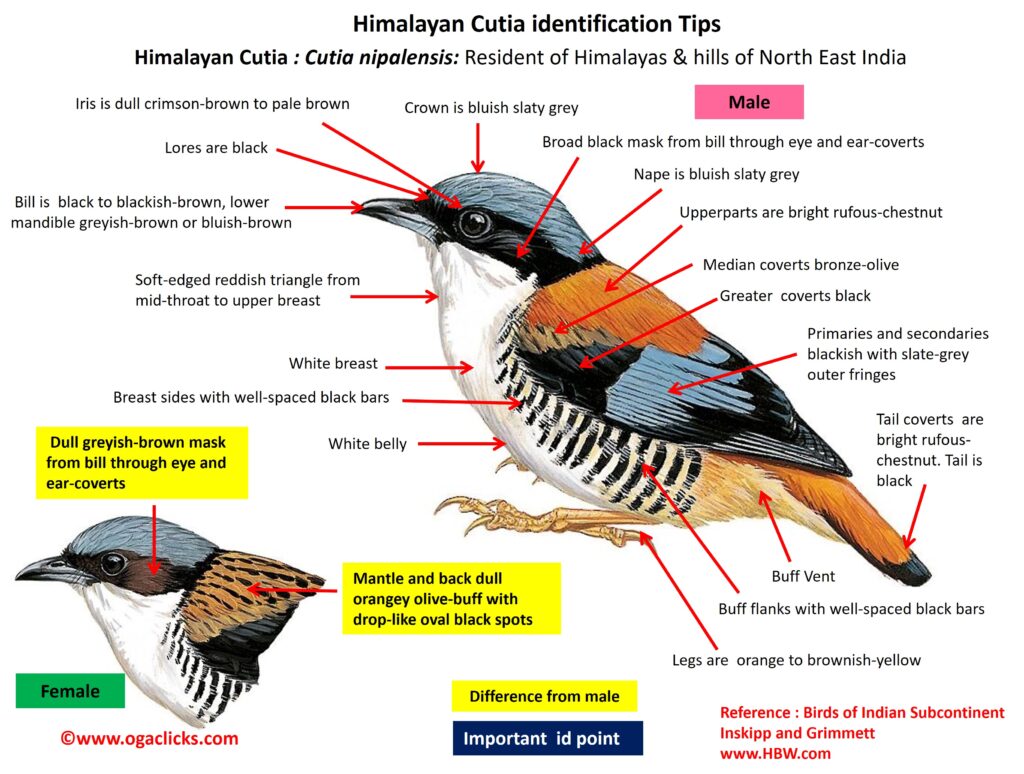
Himalayan Cutia Cutia nipalensis
Etymology :
- Cutia : Nepali name “Khatiya”
- Nipalensis: from Nepal
Vernacular Names : Lepcha: Motum-pho, Rapnun-pho, Nepal: Khatya
Distribution in India: Resident of Himalayas and North East hills in India.
Description: Size of 17–19 cm; wt. of 40–56 g. It is a chunky, sexually dimorphic babbler with grey crown, dark mask, chestnut upperparts, bold black flank barring. The male of nominate race has forehead to nape as bluish slaty grey, broad black mask from bill through eye and ear-coverts and extending in narrow band across nape. The upperparts are bright rufous-chestnut, including long uppertail-coverts extending well towards tip of blackish tail. The greater upperwing-coverts (and primary coverts) are black, median coverts are bronze-olive, tertials are slate-grey with black tips, primaries and secondaries are blackish with slate-grey outer fringes, narrow white tips on primaries. It has a white throat, breast and mid-belly, buff flanks and vent with prominent well-spaced black bars on breast side and flanks. The iris is dull crimson, brown to pale brown. The bill is black to blackish-brown, lower mandible greyish-brown or bluish brown. The legs are orange to brownish yellow. The female is duller than male, lores to nape side dull greyish-brown, mantle and back dull orangey olive-buff with drop-like oval black spots. The juvenile male resembles adult male, but head slightly duller, bars on flanks fainter. The juvenile female as adult female, but crown tinged brown, underparts tinged buff, fainter dark bars on flanks.
Habitat: it is found in broadleaf evergreen forest, particularly larger trees festooned with epiphytes and moss, sometimes open mixed oak and pine forest, commonly in tops of trees. It is found from 1200 m –2800 m in India ,descending to 700 m in winter.
Food habits: It eats Beetles and other insects, larvae, pupae, insect eggs, gastropods, seeds and berries Also feeds on pine cones and to ingest grit. It Creeps along tree trunks and branches like a nuthatch. It runs and hops, movements generally slow and rather laboured. Outside breeding season it occurs in monospecific groups of up to twelve individuals, but often in mixed flocks
Breeding habits: They breed in Mar–Jun in. The nest is an open cup made of moss and pine needles placed above ground at base of pine branch against trunk or in broadleaf tree.